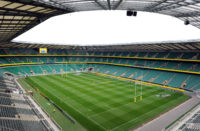Epic events are unfolding on the rugby arena of Super Rugby Tasman. The legendary team, the Crusaders from New Zealand, once dominant in the tournament, is experiencing a profound crisis. Meanwhile, the Australian club, Queensland Reds, is showing signs of impressive resurgence and gradually beginning to restore the long-lost balance of power in this prestigious competition. Rugby enthusiasts will be interested to see how the situation develops further, as will the bettors. If you want to try your hand at forecasting and assess your abilities in predicting rugby match outcomes, then Mostbet bookmaker is a good platform for safe bets – https://mostbet-hu.top/.
The Fall of the Crusaders’ Hegemony
For many years, the Crusaders have been considered an unbeatable force in Super Rugby. However, the current season has been marked by shock as the team suffered their third consecutive defeat to the Fijian club, the Drua, and plummeted to the bottom of the standings, with only one bonus point to their name. This is the worst start in the recent history of the Crusaders.
The reasons lie in a serious restructuring of the squad. The club has lost a whole host of key players and coaches, including legends like Richie Mo’unga, Sam Whitelock, Lester Fainga’anuku, Jack Goodhue, and even Scott Robertson, who took over the national team. The rich tradition of succession of the Crusaders is under threat due to the need to compensate for the loss of intellectual property. Newcomers from other countries, such as Welshman Levi Aumua, have not yet matched the team’s previous highest standards.
A troubling picture is emerging regarding the depth of reserves in New Zealand rugby. The shortage of personnel shows that even the most illustrious clubs can face serious difficulties during extensive squad renovations.
Struggle for Survival of Australian Clubs
In addition to purely sporting problems, some Australian franchises are forced to fight for mere survival due to financial difficulties. A glaring example is the situation with the Melbourne Rebels – the club intends to file a lawsuit against Rugby Australia and its president, Joe Roff. The reason for this is the proposed merger with the Moana Pasifika team against the backdrop of the Rebels’ astronomical debt of over 22 million Australian dollars.
The Melbourne franchise is determined to defend its rights and prevent the extinction of professional rugby in Victoria. Rebels’ lawyers will seek the return of 6 million dollars as missed funding, as well as an additional 2 million to cover the salaries of players representing the Australian national team. The success of the lawsuit may inspire the other four Australian teams to follow suit and make similar claims.
Such a scenario threatens the financial stability of Australian rugby on the eve of key events – two World Cups and the British and Irish Lions tour in the next five years. Instead of expected profits, Australia may face a cloud of financial ash. Photos with sparse spectators at the Rebels’ match hint at the depth of the tournament’s popularity problems in the country.
The Revival of Australian Rugby
Despite the dark clouds looming over some clubs, signs of long-awaited restoration of the balance of power between Australia and New Zealand have finally emerged on the horizon of Super Rugby. Over the past decade, the gap in skill between the teams of the two countries has reached colossal proportions, with the New Zealanders enjoying overwhelming superiority. However, the current season has seen tectonic shifts.
Leading this process is the Queensland Reds team. Under the guidance of Les Kiss, they are demonstrating impressive statistics – they rank in the top three for time possession (over 37 minutes per game), active possession (over 19 minutes), number of earned tries (14), and points scored (98). The Reds excel in set pieces, boasting a 90% lineout success rate and a 100% retention rate in their own scrums.
Advanced analytical metrics play an important role. Queensland is one of the two teams averaging over 100 rucks per game and one of the three with an LQB ratio above 60%. In a tense match against the Chiefs, the Reds executed 23 phases in their own defensive zone but managed to snatch a dramatic victory.
In recent rounds, the Reds have competed on equal terms with acknowledged leaders – the Chiefs and the Hurricanes. They managed to defeat formidable opponents from New Zealand, such as the Chiefs with a score of 25-19. Head coach Clayton McMillan noted the drastic transformation of the Australians, particularly highlighting their fanatical dedication and ability to prevent the opponent from scoring – qualities inherent in winners.
The success of the Reds is attributed to a clear structure in attacking set pieces combined with a fast-paced style of play. Kiss employs various formations depending on the situation on the field – 2-3-3, 3-2-1, and others. This allows individual players to showcase their talents, empowering them with the freedom to make decisions within their designated roles.
For instance, Suliasi Vunivalu becomes a versatile “triple threat” player – running, passing, and kicking. Young talents, previously lacking tactical guidance, receive the necessary direction. Kiss’s philosophy resonates with Joe Schmidt’s views on the game of the Australian national team.
The quintessence of the Reds’ style was epitomized by the second try in the first half against the Chiefs. The clear structure of positional attack unleashed the individual mastery of the players. A series of movements created a numerical advantage for the attackers and forced the opponent’s defense to panic at the decisive moment of execution. A superb example of synthesizing systemic organization and the improvisation of oval geniuses.

























